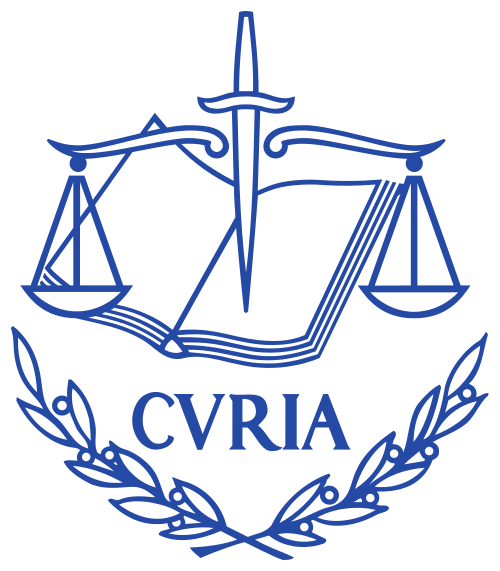The Sovereignty of the European Court of Justice and the EU's Supranational Legal System
By
2014, Vol. 6 No. 04 | pg. 1/2 | »
IN THIS ARTICLE
KEYWORDS
AbstractThe European legal system has been considered as either an intergovernmental legal system or a supranational one. The intergovernmental order, on the one hand, emphasises that the European Court of Justice should consider the preferences of member-state governments in its decision-making processes. The supranational order, on the other hand, underscores that European law generates its own legal system, therefore, the Court should rule its case law in pursuant of the primary and secondary resources of European law. In this article, it is argued that the European legal system may be recognised as a supranational legal system because three keystones of European law -- the primarily ruling reference system, the doctrines of supremacy, and direct effect -- enable the European Court of Justice to judge its cases in accordance with the provisions of European law. In addition, the contemporary case law of the Court also acknowledges the existence of the supranational legal order by focussing on the interests of individuals rather than the preferences of member-state governments. The quality and future of liberal democracies may be dependent on the ability of courts to secure individuals against sovereign states. The courts implement judicial review to protect individuals in this sense; however, liberal democracies politically have two powerful and permanent constraints on judicial review. First, legislatures could threaten to abrogate the rulings of the courts by drafting new legislation. Second, executives can threaten to ignore, obstruct or misapply the rulings of the courts. Hence, it has been asserted by many commentators, lawyers, and politicians that legislatures and executives influence judicial decision-making.1 Nevertheless, according to Sweet and Brunnell, this circumstance is different in the European Union (EU) because the European Court of Justice (ECJ) does not generally work in accordance with the preferences of member-state governments.2
The purpose of this essay is to examine where or not Sweet and Brunnell’s analysis provides an accurate reflection of contemporary decision-making in the ECJ. To do so, European legal integration is examined, after which the preliminary ruling system is scrutinised and the doctrines of direct effect and supremacy are analysed respectively. The EU has an individual-based supranational legal system and this system implies a duty on the ECJ to establish powerful authority over the interpretation of Treaties, national laws, and national courts. Finally, it is asserted that the ECJ has the power to rule without considering the preferences of member-state governments through the aid of its legal system. The European Legal Integration under the Neofunctionalist TheoryDevelopments in the EU after the 1970s in particular (such as establishing a common market, creating a common currency, improving the role of the European Parliament, and increasing the number of the member states) generated reductions in the authority of member-state governments. In addition, whilst actors paid attention to the EU’s monetary integration and internal market, the legal system of the EU evolved from an intergovernmental legal system to a supranational legal system, in that period.3 The legal integration process could be summarised as follows. The enforcement of the Treaty of Rome was dependent on responses by the national legislatures until 1963; however, a citizen of any member state has enjoyed the right to ask the domestic court to abrogate any provision of national law which is incompatible with directly applicable provisions of the Treaty of Rome since 1965. Moreover, a citizen of any member state has enjoyed the right to seek the invalidation of a domestic law which is incompatible with the directives of the European Community (EC) since 1975. Furthermore, a citizen of the Community has enjoyed the right to ask domestic courts to interpret national legislation in conformity with the directives of the Community which the member state has delayed in passing, since 1990.4 It is an undeniable fact that the role of the ECJ has been very important in the establishment of the supranational legal system. The ECJ has powerful autonomy and this allows it to rule against the preferences of member-state governments.5 Hence, it has been claimed that the integration process could be best expounded by the neofunctionalist integration theory because this theory recognises the ECJ as a primary actor of the integration.6 However, this theory has been criticised by neorealist legal scholars in particular. Those scholars argue at this point that the ECJ, despite having a primary role, considers the preferences of member-state governments because the governments have control over the ECJ.7 The neofunctionalist theory has also been criticised since the late 1990s, under three critical principles of Euro-scepticisim, namely: accountability, subsidiarity, and transparency. First, it has been asserted under the principle of accountability that the EU ought to be accountable for its policies. Second, it has been claimed under the principle of subsidiarity that if national institutions have sufficient capacities, the institutions of the EU do not exert their decision-making authorities. Finally, it has been argued under the principle of transparency that internal processes of decision-making shall be as open as possible.8 The Treaties of the EU and the case law of the ECJ have allowed further integration of EU law into national law and the establishment of the individual-based supranational legal system rather than the state-based intergovernmental legal system. To clarify, the Treaties generate a de facto constitution for the Union and the ECJ interprets these treaties as though it is the constitutional court of the EU.9 This could be better understood through the Grzelczyk10 case when the ECJ stated that the same treatment shall be provided to all citizens of the member states, irrespective of their nationality. Therefore, the neofunctionalist integration theory could be recognised as the best theory to expound the legal integration. In addition, it should be considered, under the statement of the ECJ in Grzelczyk, that the provisions of EU law impose the same duties on the national courts and the courts shall fulfil those duties. EU law imposes those duties in a number of ways; however, the preliminary ruling system, which allows individuals to challenge domestic law in the national courts, should initially be interpreted. When the EC was established, the preliminary ruling system was also adopted under Article 177 of the Treaty of Rome in order to construct the internal market. The ECJ have also had this jurisdiction under Article 150 of Euratom Treaty, Article 234 TEC,11 and finally Article 267 TFEU.12 According to Article 267 TFEU in this regard, firstly, the purpose of the preliminary ruling system is to provide the uniform application of EU law in the national courts. It is stated in this article that the ECJ could give preliminary rulings to interpret the Treaties of the EU, and to validate and interpret the acts of the organs of the EU. In addition, if a question which may include a conflict between national law and EU law is raised before the national courts or tribunals of the member states, those courts or tribunals shall request a preliminary reference from the ECJ. Moreover, the national courts may request more than one reference under certain circumstances: if the national courts encounter difficulties in applying and understanding the judgment; if the question is directly related to EU law; or if the reference leads to new considerations.13 The preliminary ruling system has been more important since the adoption of the doctrines of direct effect and supremacy. These doctrines have affirmed the primary purpose of the ECJ, the uniform application of EU law in the Member States, and have also encouraged the ECJ to determine its cases without considering the preferences of member-state governments. It might also be noteworthy at this juncture to consider that the doctrine of direct effect, on the one hand, has contributed to the integration process by bridging the gaps between national legal systems and the EU legal system; the doctrine of supremacy, on the other hand, has contributed to integration by establishing a unitary legal system.14 As can be understood through this summary, the doctrines have contributed to the establishment of the supranational legal system and therefore they will be examined in the next sections, respectively. Supremacy as a Keystone of the ECJThe traditional concepts of international law applied to the EC in the 1950s regarded states as the masters of the treaties. This allowed the governments of the Member States (1) to easily avoid the rulings of the ECJ; (2) to easily pass a new national legislation based on national law rather than Community law; (3) to easily change the powers of the Community; (4) to interpret the effects of the powers of the Community under national interests; (5) to extinguish the powers of the Community for the sake of national interests.15 However, this model was significantly overturned by two rulings of the ECJ in the 1960s, namely, Van Gend en Loos and Costa v ENEL. Firstly, the ECJ stated in Van Gend en Loos that the Treaty of Rome established a new legal order, and this legal order provided the Member States of the Community with only limited sovereign rights. Secondly, this statement was reaffirmed by the ECJ in Costa v ENEL.16 After these two early cases, the ECJ clarified the doctrine of supremacy in Simmenthal and Internationale Handelsgesellschaft. The ECJ, on the one hand, stated in Simmenthal that when a conflict between national law and Community law was encountered, Community law was supreme, therefore, national courts must disapply national law. The ECJ, on the other hand, stated in Internationale Handelsgesellschaft that Community law was supreme to all forms of national law, covering national constitutions. In other words, when faced with a confliction between national law and Community law, the national courts of the Member States must apply the provision of Community law, even if that provision was incompatible with the national constitution.17 The doctrine of supremacy is supported by the legal materials of the EU, as well as, the case law of the ECJ. The purpose of the doctrine of supremacy could firstly be found in Article 1-6 TEU18 in this context. It is stated in Article 1 TEU in this regard that “[t]his Treaty marks a new stage in the process of creating an ever closer union among the peoples of Europe.” Moreover, it is ruled in Declaration 17 of the Treaty of Lisbon that the Treaties of the EU have primacy over national law under the conditions introduced by the case law of the ECJ. Furthermore, it also ruled, in the Opinion of the Council Legal Service, EU Council Doc. 11197/07, that the primacy of EU law established in Costa v ENEL, despite not defining the primacy of Community law, is one of the cornerstones of EU law.19 The fidelity principle, which can be understood through Article 4 (3) TEU, may also demonstrate the purpose of the doctrine of supremacy. According to this article, both EU institutions and the national entities of the Member States have responsibilities. The EU institutions, on the one hand, must collaborate with the national entities to safeguard the full effectiveness of EU law. The national entities, on the other hand, have more responsibilities than the EU institutions. Those responsibilities could be summarised as follows: (1) securing the legal certainty of EU law; (2) penalising the infringements of EU law in the domestic courts; and (3) informing the Commission in case of encountered with any challenge to enforce or apply EU law.20 The essential responsibility of the Member States was also read in Adeneler.21 The ECJ stated in this regard that all Member States have a responsibility for ensuring the full effectiveness of EU law in the national courts.Continued on Next Page » Suggested Reading from Inquiries Journal
Inquiries Journal provides undergraduate and graduate students around the world a platform for the wide dissemination of academic work over a range of core disciplines. Representing the work of students from hundreds of institutions around the globe, Inquiries Journal's large database of academic articles is completely free. Learn more | Blog | Submit Latest in Law & Justice |

















